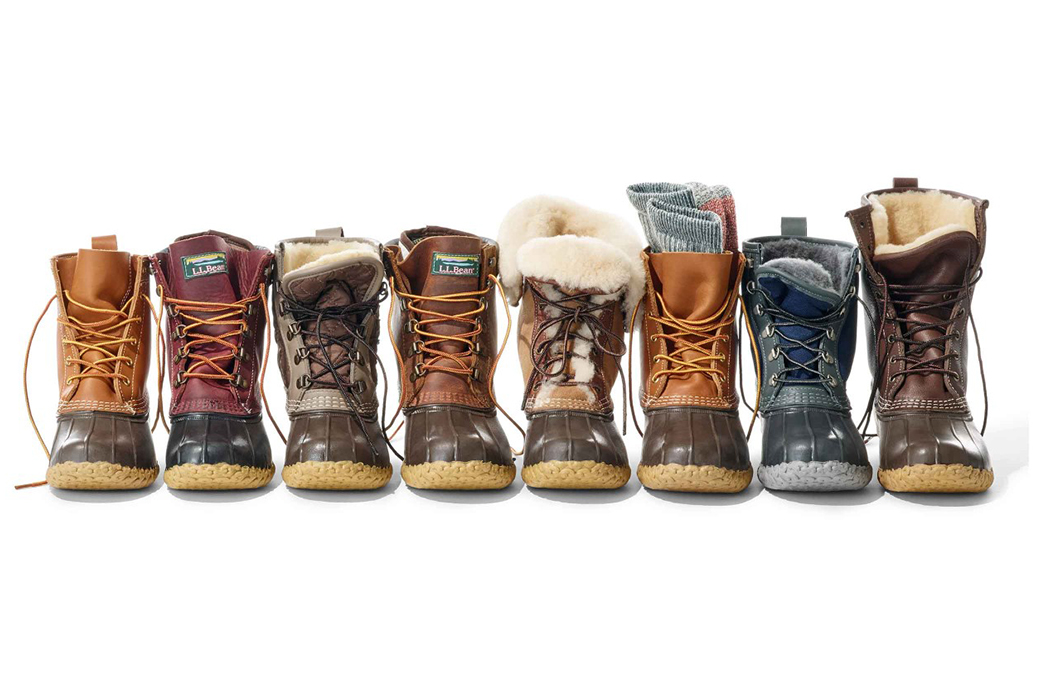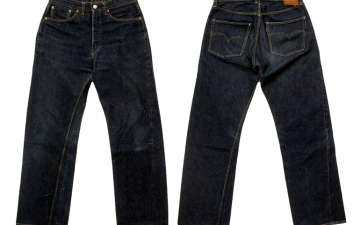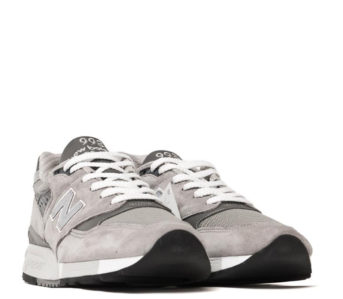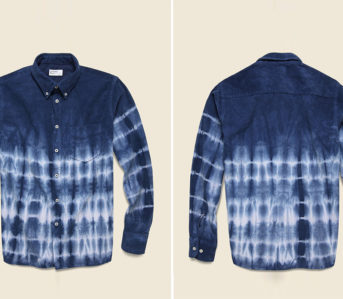Winter calls for drastic action, especially in some parts of the world where the cold weather has the tightest grip. Solutions come in many forms, down-fill, hats, scarves, gloves, but when it comes to wet, slushy roads, the king of the hill is the almighty Duck Boot. The duck boot has held a presence in the American outdoors for over a century, easily navigating both form and function with a variety of audiences.With the year drawing to a close and the most challenging season upon many of us, we’re spilling the beans on the trusty duck boot; taking a look at its origins, strengths, and some of the duck boots on the market today.
What is a Duck Boot?
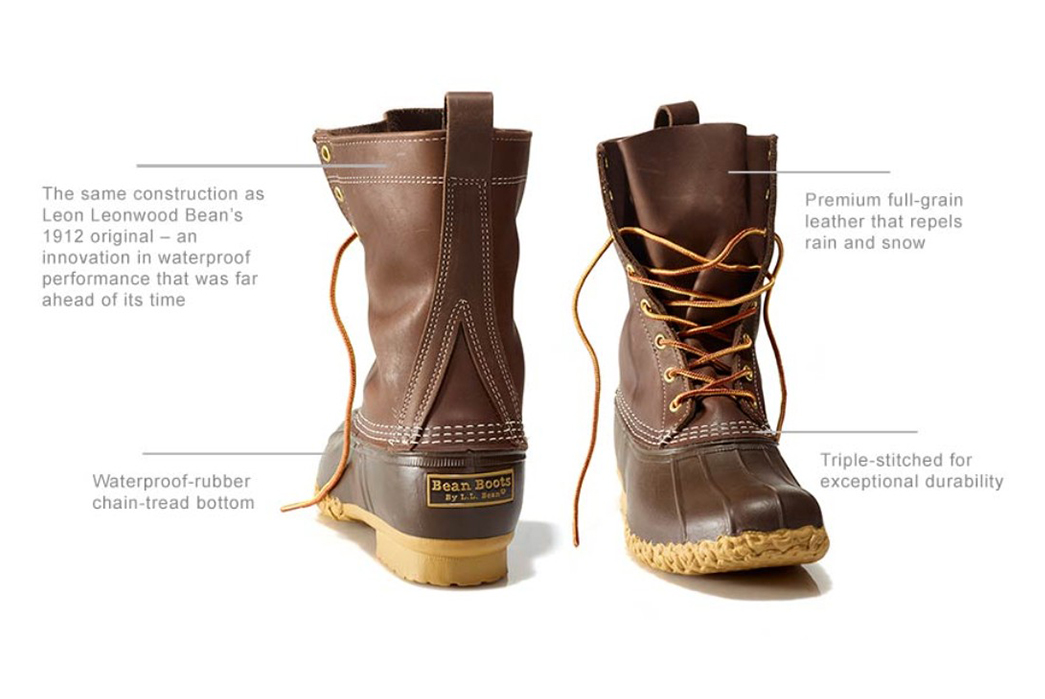
Image via L.L. Bean
A duck boot is a waterproof, shoe-like boot that has a rubber lower section and a leather or waterproof textile upper. Originally designed for hunters in the early twentieth century, the duck boot is essentially a pair of rugged galoshes with a leather ankle-supporting shaft stitched on. Duck boots typically feature a raised seams or ridges on the toe, and a rubber outsole that’s molded around onto the upper (some makers will utilize a commando sole or other rugged outsole). The upper will typically be made of leather or rubber, with a bellows tongue to ensure the boot is watertight.
Benefits of duck boots:
- Waterproof
- Rugged sole for traction and grip
- Easy to wipe clean or wash
- Usually roomy in fit to allow space for thick socks
- Many can be re-soled
A Brief History of the Duck Boot

Leon Leonwood Bean via L.L. Bean
The origins of the duck boot can be traced back to 1912 and the founder of archetypal outdoor brand, L.L.Bean. After growing frustrated with the effects of the wet, sloppy marshes of Freeport, Maine, Leon Leonwood Bean approached a local cobbler and asked him to create a shoe that would keep his feet dry and comfortable while he hunted. The result was the Maine Hunting Shoe.
Bean’s waterproof shoe concept was to attach a leather ankle support to rubber-soled galoshes. After receiving his first pair back from the cobbler and wearing them on a successful hunting trip, Bean was so impressed with his creation that he christened his creation ‘The Maine Hunting Shoe’ and ordered 100 pairs to be made, ready to be sold to fellow hunters. After some initial quality control issues, the Maine Hunting Shoe was eventually well-received by outdoorsmen across the United States. So much so that it was referred to simply as the ‘Bean Boot’ – a moniker that has survived until this very day.
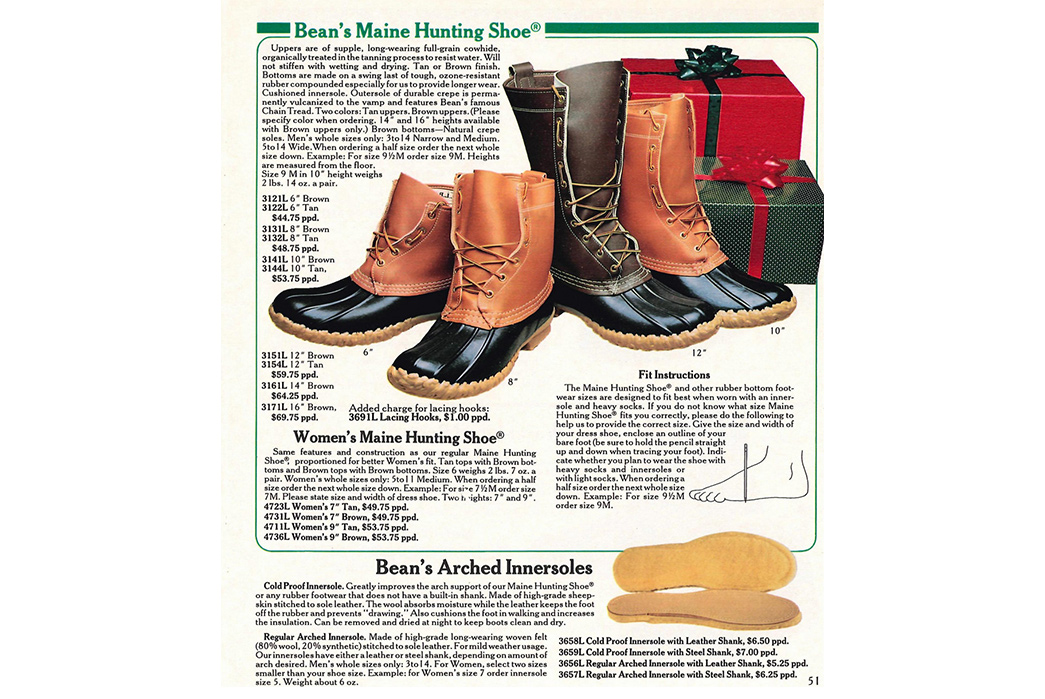
Image via Ask Andy About Clothes
In the years to come, the Bean Boot became one of the most important pieces of outdoor footwear on the market, prompting other outdoor brands to produce their own renditions of Bean Boot. In reference to duck hunting, the generic term ‘duck boot’ was given to the style pioneered by L.L.Bean. By the 1950s, the duck boot had become widely fashionable in many areas of the United States. Sorel, the outdoor footwear brand established by the Kaufman Rubber Company in 1962, began producing their rendition of the duck boot which remains popular today.
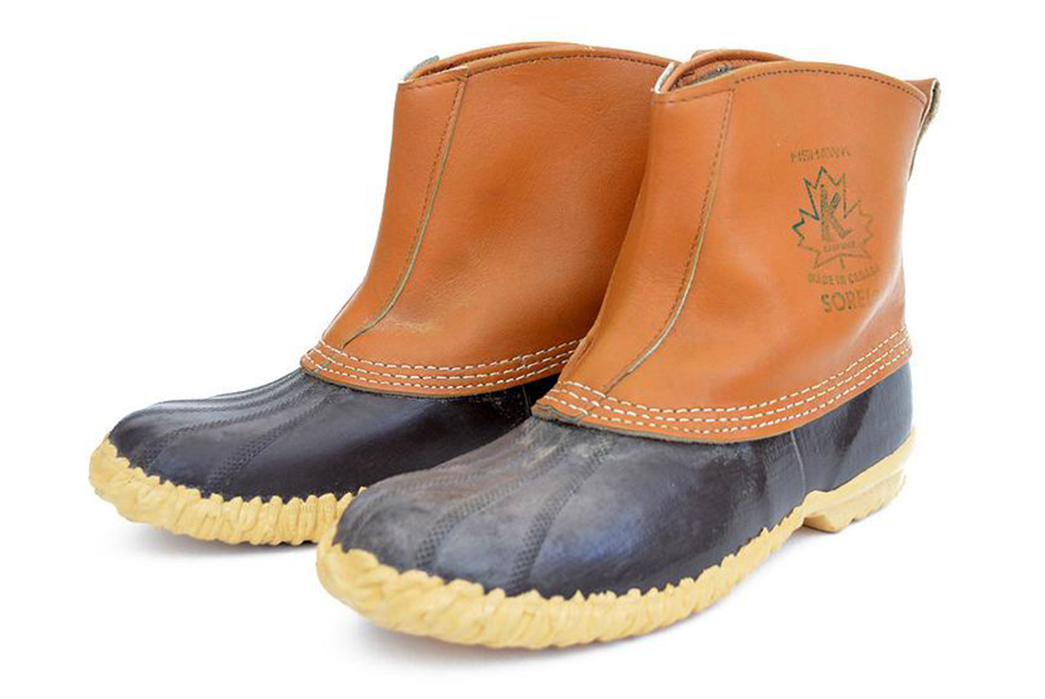
Vintage Sorel Duck Boots via Anystore
While people across the U.S. appreciated the duck boot throughout the 60s and 70s, it was with in the Ivy League that the duck boot really took off. The rugged, waterproof, and somewhat ugly boot was an unlikely candidate to enter the Ivy wardrobes filled with oxford shirts, gabardine pants and knitwear, they eventually became a seasonal fixture of the East Coast prep wardrobe. In the 1980s, The Official Preppy Handbook called them the second-most important footwear choice in the preppy male’s wardrobe, behind Bass’ Weejuns loafers.
With the modern wardrobe so inspired by those of the Ivy Leaguers and ‘prep’ fashion, it’s no surprise that the duck boot has completely transcended its rugged roots to become a modern staple. The rise of Pinterest and its infectious influencing power may have been behind the duck boot’s further resurgence in the 2010s. How? Well, come the end of September, Pinterest is flooded with gushy images of stereotypical autumnal scenes. A cozy campfire, marshmallows slowly roasting. A couple – both wearing down jackets and beanies – sharing a kiss over a pumpkin spiced latte. Three friends taking a leisurely walk through a park strewn with piles of amber Autumn leaves. and what are they all wearing? Duck boots.
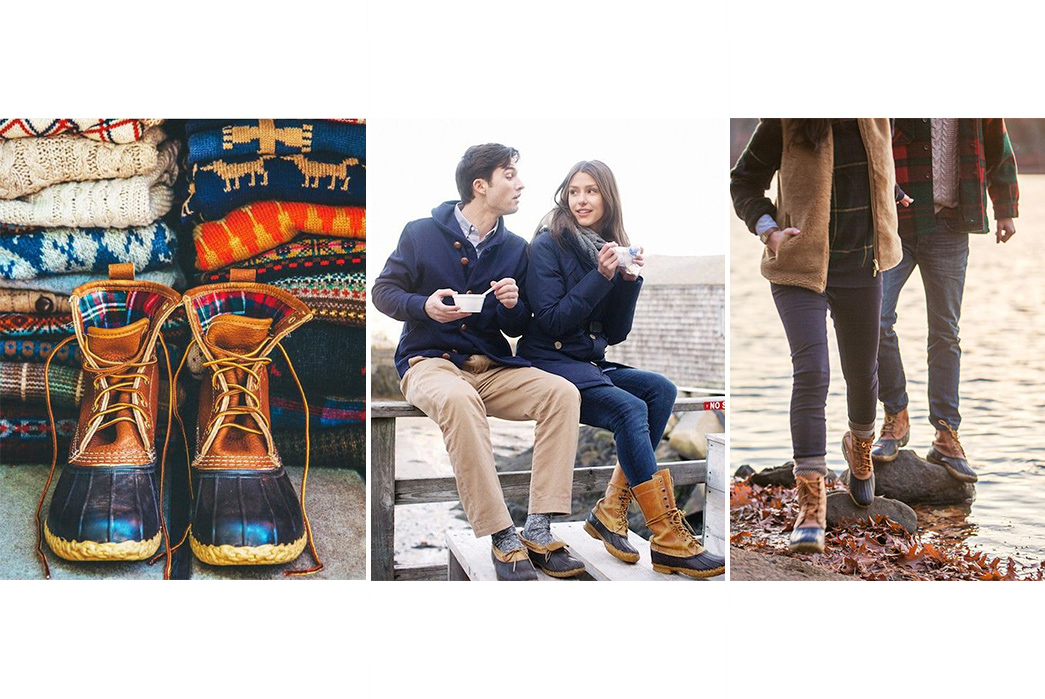
Images via Pinterest
With over 77 million adults using Pinterest in the United States alone, it’s no surprise people are going nuts for duck boots. So nuts, in fact, that in Fall of 2014, L.L.Bean registered a wait-list of over 100,000 people, all waiting for a pair of the sold-out Bean Boot. And as we’ve seen from more contemporary product like the Adidas Yeezy collections and limited release Nike Air Jordans, when something sells out, it makes people want it even more. You wouldn’t expect the duck boot to create such a hype, but it did. You probably won’t see any on Grailed, though.
Duck Boots Available on the Market Today
The duck boot is a true piece of American outdoor heritage and even though we don’t hear about duck boot shortages anymore, they still remain extremely popular today. The two originals are still available today:
Bean Boot
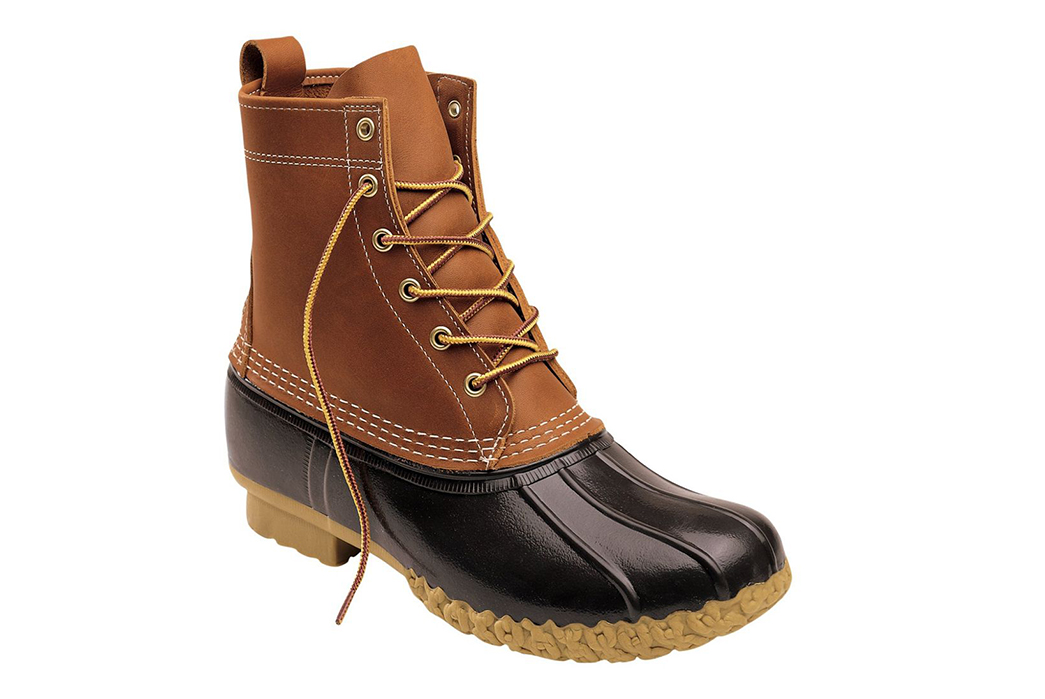
Available from $159 at L.L. Bean.
Sorel Cheyanne II Lace Duck Boot
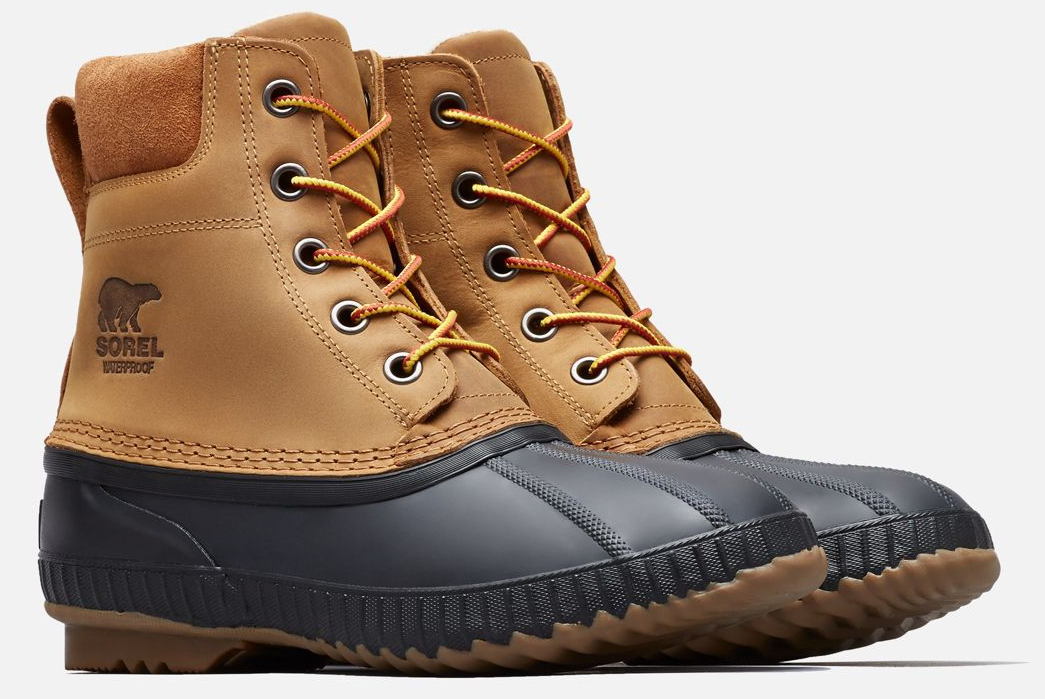
Available for $155 from Sorel.

